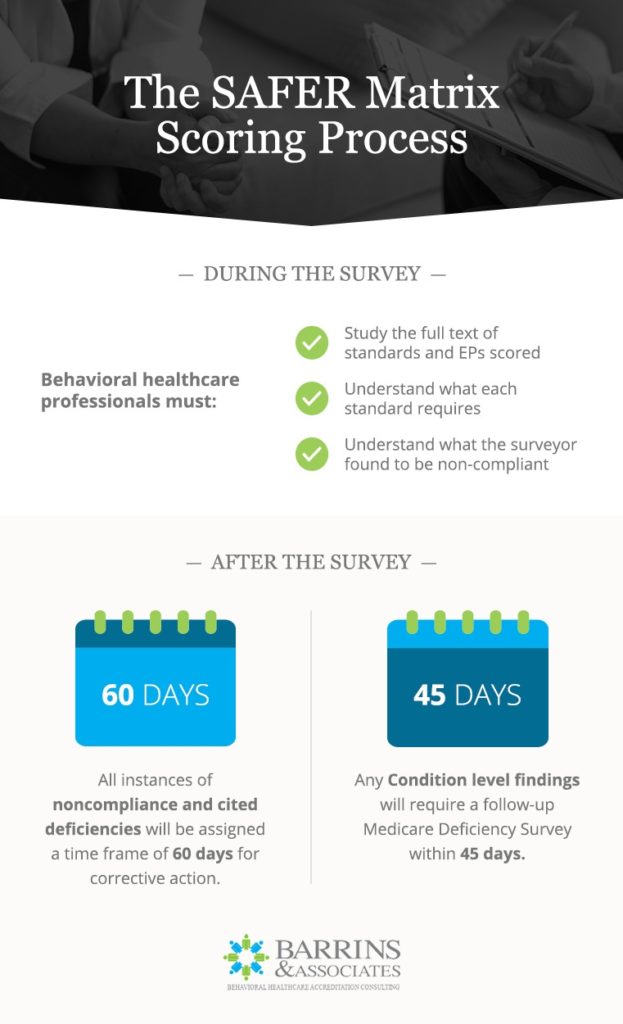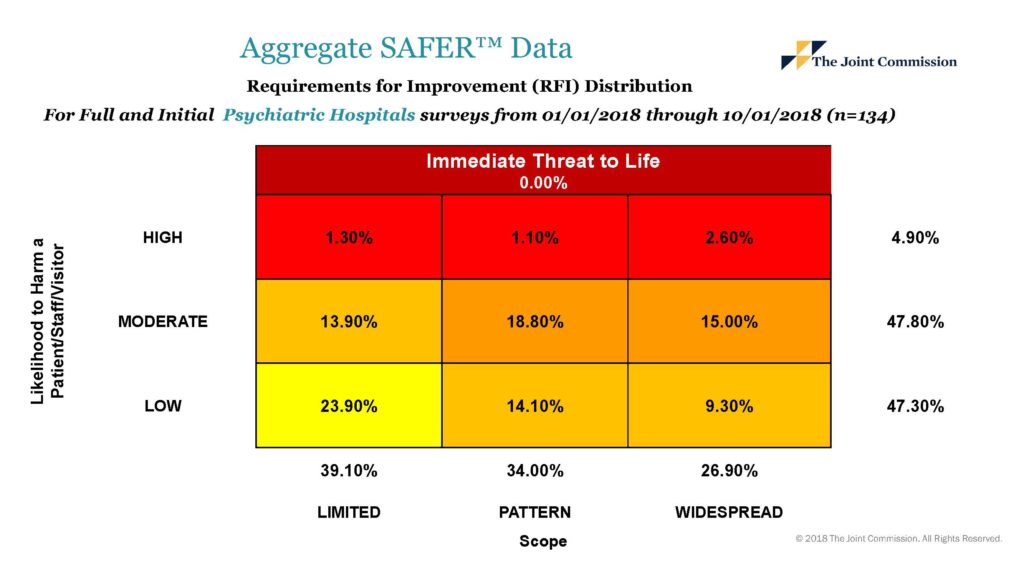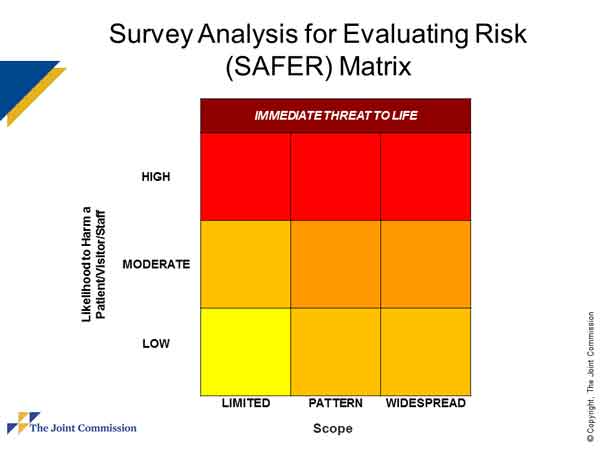The Joint Commission’s SAFER matrix – that colorful grid displaying survey findings – we’ve all become accustomed to it. But how does it impact the survey process? And how is the scoring shaking out for psychiatric hospitals and behavioral health organizations? Let’s take a look. (For background on the implementation of the SAFER matrix, see our May 2016 post.)
Use of SAFER Matrix during Surveys
Each morning, the TJC surveyors display their findings on the SAFER matrix. Thus, the organization sees where the various findings are being scored on the matrix. The preliminary survey report (produced onsite) also includes the SAFER matrix. For more detailed info, see the Matrix Resources on the Joint Commission website.
Be Ready to Discuss the Matrix
When the surveyors share the Joint Commission SAFER matrix each day, it’s important to understand the detail behind each finding. The matrix will show the standard and element of performance (EP) they cited. Also, the surveyors will explain their finding for that standard. However, the organization doesn’t see the full narrative description of that finding until they get the preliminary report on the final day of survey.
Thus, it’s important to do your homework. When the surveyors display the matrix each day, study the full text of the standards and EPs they’ve scored. Make sure you understand what the standard requires. Moreover, make sure you understand what the surveyor found to be non-compliant.

Having done this, you’re better prepared to have a discussion with the surveyors. You may have questions about what they cited. Or, you may feel there’s information they haven’t seen that would impact the scoring.
The best time to resolve these issues is definitely during the survey. There is Special Issue Resolution time on the schedule for this purpose. So, don’t be shy about doing that. TJC has clamped down significantly on the number of post-survey Clarifications they approve. So, once again, better to get it resolved onsite.
Condition Level Findings and the Matrix
Be aware there is not a 1 to 1 correspondence between Condition level findings (for hospitals) and the High Risk/Widespread box on the matrix. A hospital could have no findings scored in the High Risk/Widespread box yet still have enough findings throughout other areas that would rise to a Condition level finding. Condition level findings require a follow-up Medicare Deficiency Survey by TJC within 45 days.
SAFER Data for Psychiatric Hospitals and Behavioral Health Organizations
At the TJC Consultants Forum meeting in Chicago, COO Mark Pelletier shared summary data on SAFER findings. The grid below displays the distribution of Requirements for Improvement (RFIs) for psychiatric hospitals.
Psychiatric Hospitals

The details behind this data show the same trends as the past few years. The most frequently cited clinical findings are for treatment plans and the B Tags (Special Medical Records Requirements for Psychiatric Hospitals.) The most frequently cited Environment of Care findings are for ligature risks.
Behavioral Health Organizations

Findings for BH surveys also follow previous trends. The most frequently cited findings are for treatment planning, suicide risk assessment, and verification of credentials. Not much new there.
So, the Joint Commission SAFER matrix provides a snazzier, more customer-friendly packaging of survey results. However, the survey challenges remain the same. An organization must know the standards and consistently implement them. As always, continuous readiness remains the key to survey success.


